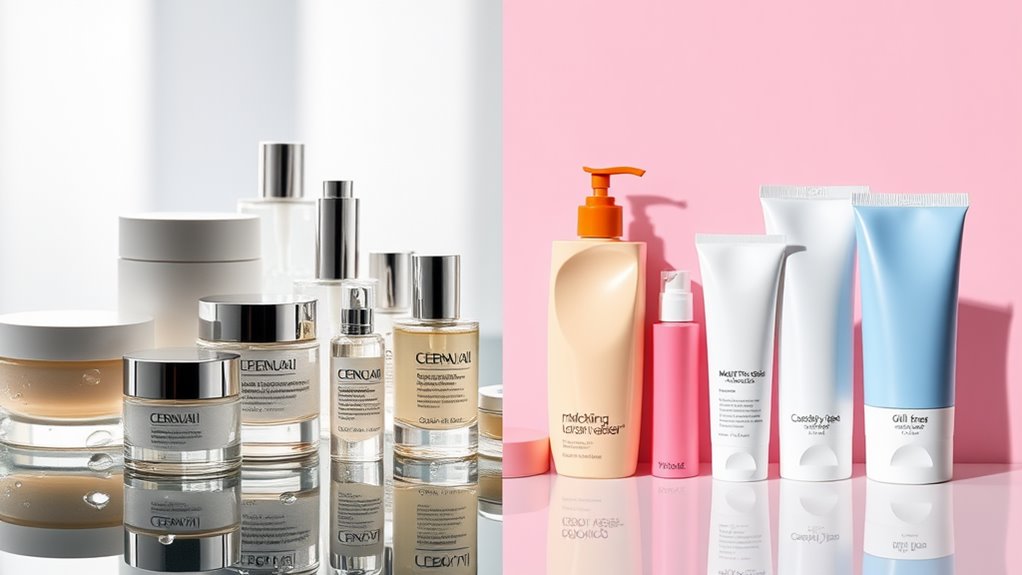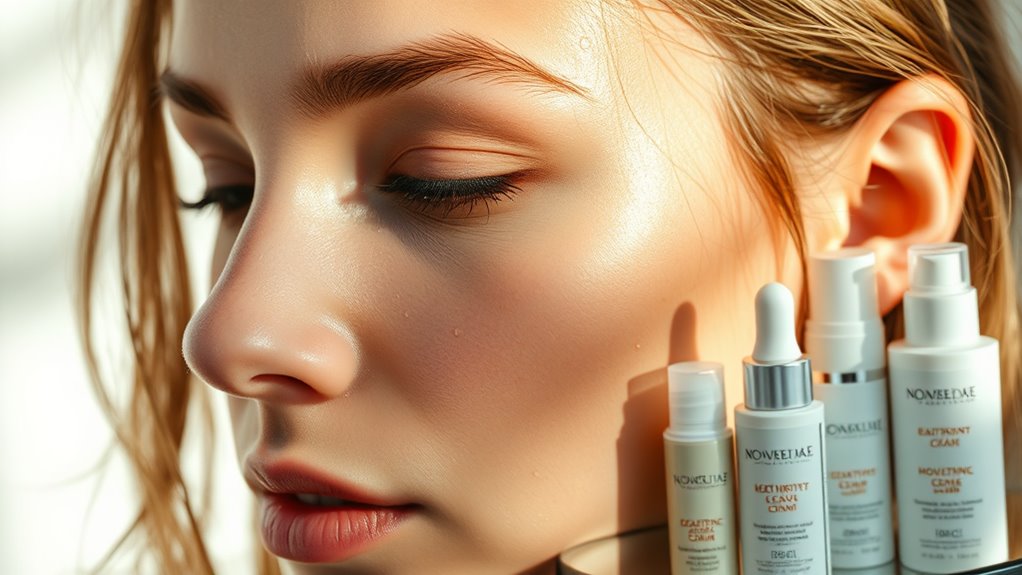Battle of the Skins- Dry Skin vs. Oily Skin Care Essentials
When it comes to skincare, understanding your skin type is crucial. Dry skin often feels tight and may appear flaky, while oily skin tends to be shiny with a higher likelihood of breakouts. Each type requires a tailored approach to effectively address its unique needs. By selecting the right products, you can enhance your skin’s health and appearance. But, what specific ingredients should you look for to achieve optimal results?
Understanding Dry Skin: Causes and Characteristics
What exactly causes dry skin, and how can you identify its characteristics?
Dry skin occurs when the skin’s moisture barrier is compromised, often due to environmental factors, aging, or underlying health conditions.
You might notice symptoms like flakiness, tightness, or redness.
In contrast to oily skin, which has excess sebum, dry skin lacks adequate oil production, leading to discomfort and irritation.
Identifying dry skin involves observing these signs and recognizing that it may worsen in colder climates or with excessive washing. A simple test for oily or dry skin can help you determine your skin type more accurately.
Understanding these characteristics helps you tailor your skincare approach effectively, maintaining skin health and comfort.
Essential Products for Dry Skin Care
When it comes to caring for dry skin, selecting the right products is crucial for restoring moisture and maintaining skin health.
Start with a gentle, hydrating cleanser free from sulfates to avoid further irritation.
Incorporate a rich moisturizer containing hyaluronic acid or glycerin to lock in moisture.
Look for occlusives like shea butter or petrolatum to create a barrier against water loss.
Regularly apply a nourishing serum with ceramides to repair the skin’s natural barrier.
Additionally, consider using a humidifier to combat environmental dryness.
One transformative ingredient to look for in your products is immediate hydration, as it can dramatically enhance the effectiveness of your skincare routine.
Together, these products can significantly improve skin hydration and overall appearance, promoting a healthier complexion.
Understanding Oily Skin: Causes and Characteristics
Oily skin affects approximately 30% of the population and is characterized by an overproduction of sebum from sebaceous glands.
This excess oil can lead to a shiny complexion, enlarged pores, and a higher likelihood of acne breakouts.
Factors contributing to oily skin include hormonal fluctuations, genetics, and environmental influences.
For instance, during puberty or menstrual cycles, increased androgen levels stimulate sebum production.
Additionally, a diet high in refined carbohydrates may exacerbate oiliness.
Recognizing these characteristics is essential in understanding your skin type and developing an effective skincare strategy tailored to your unique needs. One advantage of oily skin is that it often results in a more youthful appearance due to the natural moisture retained by the skin.
Essential Products for Oily Skin Care
Managing oily skin effectively requires the right selection of products designed to balance sebum production while addressing associated concerns like acne and enlarged pores.
Start with a gentle, foaming cleanser containing salicylic acid or benzoyl peroxide to unclog pores and reduce breakouts. Follow up with an oil-free moisturizer; look for lightweight, non-comedogenic formulas containing hyaluronic acid to hydrate without adding excess oil. Incorporate a clay mask weekly to absorb oil and minimize shine. Lastly, use a broad-spectrum sunscreen; choose a gel-based option to protect your skin without clogging pores.
In addition, consider using effective oil control products to further enhance your shine-free complexion.
These essential products will help you maintain a balanced, healthy complexion.
Tailored Skincare Routines for Each Skin Type
For dry skin, focus on hydration.
Start with a gentle cleanser, followed by a rich moisturizer containing hyaluronic acid or ceramides.
Incorporate a hydrating serum and consider weekly applications of hydrating masks.
For oily skin, begin with a gel-based cleanser to reduce excess oil.
Use lightweight, oil-free moisturizers and incorporate salicylic acid to prevent breakouts.
Exfoliate regularly with chemical exfoliants to unclog pores.
Both types should apply sunscreen daily.
Tailoring your routine ensures that you’re addressing your skin’s specific needs, promoting health and balance. Additionally, for those with combination skin, it’s essential to balance hydration and oil control by using lighter products in oily areas while providing extra moisture where needed.





